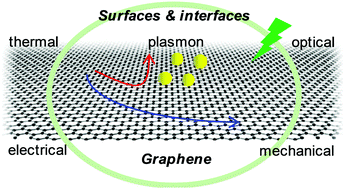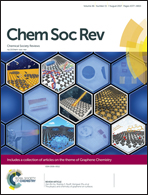The physics and chemistry of graphene-on-surfaces
Abstract
Graphene has demonstrated great potential in next-generation electronics due to its unique two-dimensional structure and properties including a zero-gap band structure, high electron mobility, and high electrical and thermal conductivity. The integration of atom-thick graphene into a device always involves its interaction with a supporting substrate by van der Waals forces and other intermolecular forces or even covalent bonding, and this is critical to its real applications. Graphene films on different surfaces are expected to exhibit significant differences in their properties, which lead to changes in their morphology, electronic structure, surface chemistry/physics, and surface/interface states. Therefore, a thorough understanding of the surface/interface properties is of great importance. In this review, we describe the major “graphene-on-surface” structures and examine the roles of their properties and related phenomena in governing the overall performance for specific applications including optoelectronics, surface catalysis, anti-friction and superlubricity, and coatings and composites. Finally, perspectives on the opportunities and challenges of graphene-on-surface systems are discussed.

- This article is part of the themed collection: Graphene Chemistry


 Please wait while we load your content...
Please wait while we load your content...